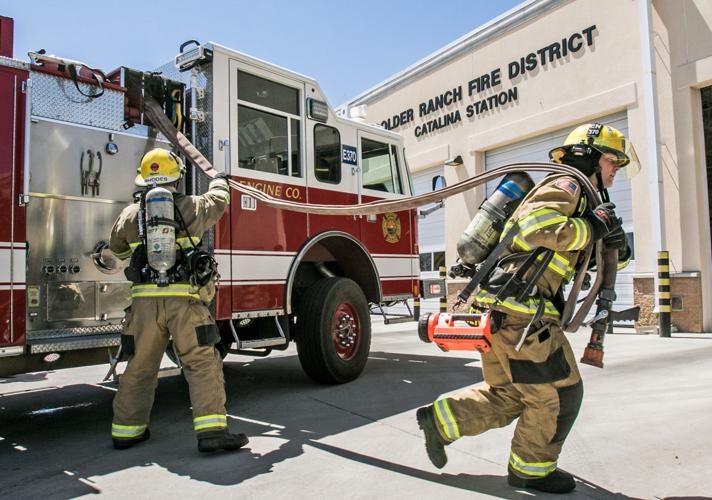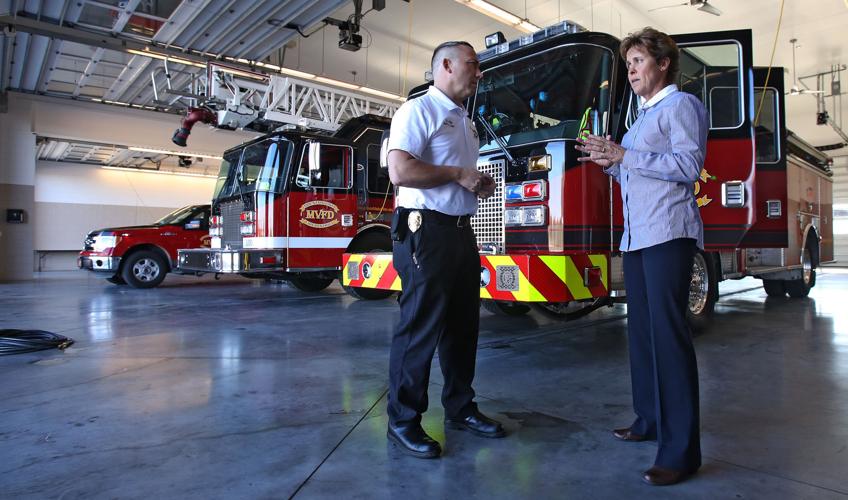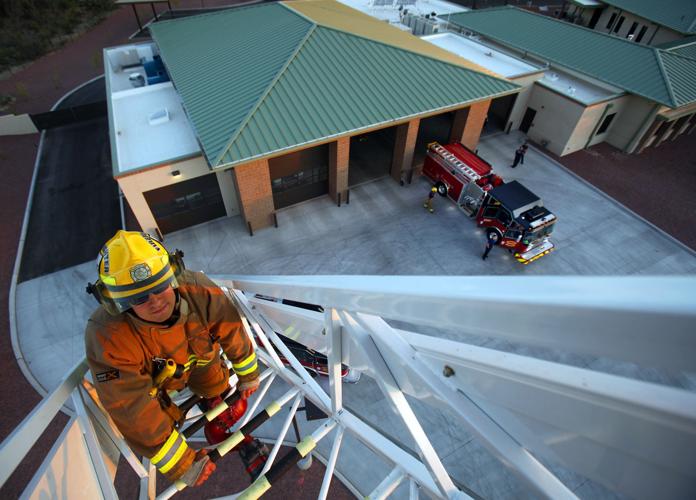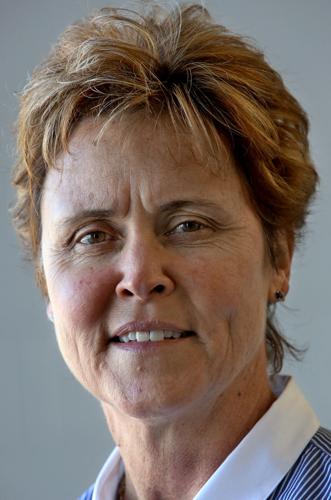The Golder Ranch and Mountain Vista fire districts northwest of Tucson are working to complete a consolidation before an August deadline, officials said.
Under the plan, the much larger Golder Ranch will absorb Mountain Vista’s 19-square-mile district in northern Pima County, Marana and parts of Oro Valley, along with its employees, which means the smaller district will no longer exist.
Gov. Doug Ducey signed House Bill 2414 on April 10 restricting the use of a document that’s necessary for fire districts to provide ambulance service. Anyone operating an ambulance is required to have a certificate of necessity, which is approved by the state’s Department of Health Services.
Golder Ranch has a certificate, but Mountain Vista’s department has relied on private ambulance service since it was formed in 2008 after a merger of three smaller fire districts.
Under the previous law, a merger or consolidation of two districts expanded the boundaries of the certificate, but the new law no longer allows for that. In an effort to improve service to the community, Golder Ranch and Mountain Vista have fast-tracked to have the consolidation finalized before Aug. 9, which is when the new law takes effect.
Although the departments had been discussing the consolidation for about a year, the change in legislation has shortened the consolidation timeline, said Mountain Vista Fire Chief Cheryl Horvath.
Horvath and Golder Ranch Fire Chief Randy Karrer say the consolidation is the right step for the departments to take.
While American Medical Response, the ambulance service Mountain Vista uses, has provided excellent service and meets the standards set by the state, those aren’t necessarily the best practices to use on a local level, Horvath said.
In addition, as a private ambulance company, AMR isn’t required to share its local performance results with the fire department.
While Mountain Vista is able to track ambulance response times through the 911 dispatch system, records kept by AMR are not made available to department officials.
Another factor in the consolidation is that as a large nationwide company, smaller districts likely don’t mean as much to AMR as they do to local departments, Karrer said.
“It’s about the local communities’ needs,” Karrer said. “The consolidation will provide us with more local control. This makes sense because organizationally, we share very similar philosophies and we want to see the best service provided to our residents.”
The consolidation also makes sense because the departments have worked closely for a number of years.
“We currently run a couple of intergovernmental agreements with Golder Ranch,” Horvath said. “They take care of our IT services and our fleet, and we start off training together and we share the fire marshal services.”
Because Mountain Vista’s district is so spread out, it has been working with Northwest Fire District and Golder Ranch under what’s called automatic aid, where the closest unit responds to the emergency regardless of district boundaries.
“We’re a small district, we don’t have a lot of resources and we’re only two stations. We’ve had these agreements with Golder, so it really seemed like the natural step to work toward a consolidation,” Horvath said.
Mountain Vista has 54 employees to Golder Ranch’s 192.
Founded in 1977, Golder Ranch’s district is 222 square miles, has eight stations and serves 60,000 residences in Oro Valley, Catalina, SaddleBrooke and southern Pinal County.
Because Mountain Vista’s district is 80 percent residential, with 38,000 residents, it’s unlikely that it will experience much commercial development in upcoming years, Horvath said.
While the department is in good shape financially for the next five to seven years, beyond that, the sustainability is in question, she said.
“It’s always better to make a move when you’re in a good financial position,” Horvath said.
No job losses are expected under the consolidation, especially since Mountain Vista runs a lean department, with only five administrative staff members who work 40 hours per week, Horvath said.
It’s likely that people will move into different positions, but the consolidation is also expected to reduce the redundancy of administrative costs.
Aside from ordering more Golder Ranch uniforms and changing the name on Mountain Vista’s fire stations and vehicles, there aren’t expected to be any significant costs associated with the consolidation.
Under the consolidation, Golder Ranch will also have more robust resources in special operations, since it will absorb Mountain Vista’s hazardous materials and technical rescue employees, Karrer said.
While Mountain Vista’s tax rate is $2.35 per $100 of secondary assessed property value and Golder Ranch’s is $2.29, the consolidated rate will be $2.29, which means no change for current Golder Ranch residents and a slight decrease for Mountain Vista residences. For a home valued at $230,000, the consolidated fire district tax on the property would be roughly $526.70 a year.
Horvath and Karrer have been working closely with the labor unions on the consolidation process and department employees have also expressed support.
Because there are no “personalities, politics or egos” at play, the process has run smoothly, Karrer said.
“Our (departments’) cultures are very aligned, our labor groups are very aligned,” said “We’re doing this together and everybody’s very positive about it and excited,” said Steve Lunde, North Tucson Firefighter’s Association president and captain at Golder Ranch.
Andrew Hatfield, the Mountain Vista union representative for the Northwest Firefighters Association, said his group is looking forward to the consolidation.
“We fully support this and we’ve always been supportive of the departments working real closely together,” Hatfield said. “This really just solidifies the relationship that we have with our public safety partners.”
Under the consolidation, Karrer will remain chief of Golder Ranch and Horvath, who has served as Mountain Vista’s chief since last January, will be included in the senior level of command.
“I need her leadership and her skills to make this work, because I can’t do this without her,” Karrer said. “She’s brought a tremendous sense of not just ownership, but also leadership to Mountain Vista. She was able to really make that organization shine.”
Because transparency and education are the primary focus of the process, the departments are holding public meetings in June and hearings in July. (See box for times and locations.)
Although the votes by the two districts’ governing boards take place July 17, and, if approved, the consolidation will be in place by the end of July, the district still has to get the state to approve the expanded certificate of necessity before the Aug. 9 deadline. However, Karrer isn’t anticipating any problems.
“This is no different than a boundary change under annexation,” he said.
Horvath and Karrer believe the public will embrace the consolidation, saying that when first responders arrive at an emergency, people aren’t worried about whose logo is on the uniform.











